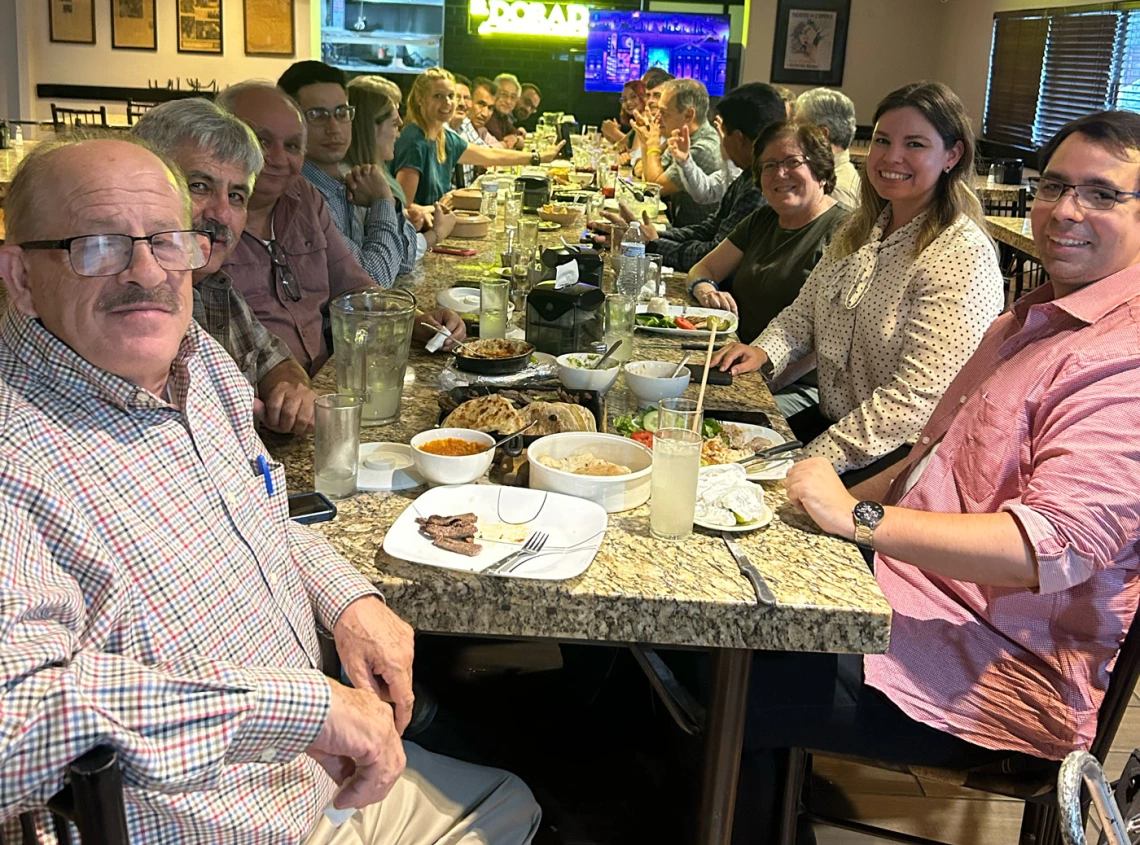TAAP Workshop in Hermosillo: Participatory, Positive, and Productive

Last week, WRRC Director Sharon B. Megdal and Associate Director Jamie McEvoy traveled to Hermosillo, the capital of the Mexican state of Sonora, to participate in a Transboundary Aquifer Assessment Program (TAAP) workshop. Director Megdal described the workshop as “participatory, positive, and productive.” In coordination with representatives from the International Boundary and Water Commission (IBWC/CILA - US and Mexican sections), collaborators from the Department of Geology at the University of Sonora (Unison) helped organize the workshop, which was held on the Unison campus September 10–11. Other TAAP partners in attendance included representatives from the US Geological Survey (USGS), the National and State Commissions of Water in Mexico (CONAGUA and CEA, respectively), and the Mexican Geological Service (SGM). Director Megdal had the opportunity to share remarks on the importance of engagement and outreach and discuss the factors that contribute to successful transboundary outcomes. As described in her recent Reflections, this includes “eating with your partners,” illustrated in the photo of our dinner with TAAP partners!
This workshop marked the “quinceañera” or 15th year of the TAAP program. TAAP was formalized through a Joint Report signed by the Principal Engineers of the IBWC on August 19, 2009, to provide a more complete, scientific understanding of the transboundary aquifers shared by the US and Mexico. In Arizona, the San Pedro River Basin and the Santa Cruz River Basin were identified as priority transboundary aquifers. The workshop provided an overview of past accomplishments, including the publication of the 2016 Binational Study of the Transboundary San Pedro Aquifer in English and Spanish. Several additional TAAP publications are available on the WRRC’s website. The report on the Santa Cruz Aquifer is nearly complete and the study is expected to be available soon, so stay tuned for updates! Participants noted that the TAAP has advanced significantly since the first workshop in which the US maps ended at its southern border and the Mexico maps ended at its northern border.
The workshop provided an opportunity to strengthen collaboration and cooperation between US and Mexico, discuss common interests related to the study and evaluation of shared aquifers, and identify opportunities for future binational collaboration. The discussions underscored the interest in continuing the collaborative approach that has been the hallmark of the TAAP efforts to develop a common understanding of transboundary aquifer and groundwater conditions on the Arizona-Sonora border. A key outcome was agreement, subject to more formal approval, to prioritize a binational effort to update and catalog data, starting with the transboundary San Pedro Aquifer. Additionally, attendees expressed interest in developing binational models of the transboundary aquifers. However, resources to support binational data collection and modeling are needed to move forward. The WRRC hopes to partially support these new, binational efforts with TAAP funding.

